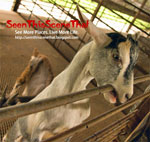Eco-friendly Toa Payoh Town Park
Developed in the seventies, the Toa Payoh Town Park sprang up with Singapore’s first new town. Sandwiched between Toa Payoh Lorong 6 and the Pan Island Expressway, I remember coming here to watch wedding couples busy with their bridal photography.
A busy bus interchange faces the park beside the brand new HDB Hub. The lack of a playground on site points to the mature demographic pattern of Toa Payoh’s residential population, although new high-rises (bringing younger families) have appeared over the horizon.
Despite its lack of size and beautiful gardens, Toa Payoh Town Park manages to hold its own against other newer and more spacious parks. Within its perimeter, a unique collection sits inside a compact area. There is a lotus pond with stone-arch bridges, an observation tower, a shady pavilion with trellis, a pebble-lined foot reflexology pavement, a fountain, a cascade pool and washroom facilities. A park item which grossly missing is a playground for kids, but I suppose is due to insufficient user demand. At one corner, construction is progressing to build a double-floor center, likely for dining places or shops.
I was hoping to scale the observation tower for an aerial view of Toa Payoh. However, a locked gate at the foot of the tower denied access. As you may remember, towers appeal to me tremendously as I once slept in one. You can read that post here. Fortunately, a public qi-gong performance at the pavilion provided visual entertainment. The participants seemed like regulars as they moved in sync with one another. After their practice, they joked and laughed on their way to breakfast.
Developed in the seventies, the Toa Payoh Town Park sprang up with Singapore’s first new town. Sandwiched between Toa Payoh Lorong 6 and the Pan Island Expressway, I remember coming here to watch wedding couples busy with their bridal photography.
A busy bus interchange faces the park beside the brand new HDB Hub. The lack of a playground on site points to the mature demographic pattern of Toa Payoh’s residential population, although new high-rises (bringing younger families) have appeared over the horizon.
Despite its lack of size and beautiful gardens, Toa Payoh Town Park manages to hold its own against other newer and more spacious parks. Within its perimeter, a unique collection sits inside a compact area. There is a lotus pond with stone-arch bridges, an observation tower, a shady pavilion with trellis, a pebble-lined foot reflexology pavement, a fountain, a cascade pool and washroom facilities. A park item which grossly missing is a playground for kids, but I suppose is due to insufficient user demand. At one corner, construction is progressing to build a double-floor center, likely for dining places or shops.
I was hoping to scale the observation tower for an aerial view of Toa Payoh. However, a locked gate at the foot of the tower denied access. As you may remember, towers appeal to me tremendously as I once slept in one. You can read that post here. Fortunately, a public qi-gong performance at the pavilion provided visual entertainment. The participants seemed like regulars as they moved in sync with one another. After their practice, they joked and laughed on their way to breakfast.
If you look carefully around the park, the presence of wood materials is clear. The use of Jarrah wood plays a heavy role in the provision of the materials for the flooring, signage, outdoor benches and fences. This eco-friendly initiative is in keeping with the National Parks’ policy of environmental sustainability. Instead of using new timber from virgin, regrowth or plantation forests, recycled Jarrah timber is used as it has been found to be fire, termite and rot resistant.
The Jarrah Tree (Eucalyptus marginata) is native to the southwestern coastal belt of Australia. Able to reach heights of 50 metres with a trunk diameter of 3 metres, Jarrah trees are able to live up to 500 years old. Every two years, fragrant, creamy-white flowers are shed after providing pollen and nectar for birds, insects, bees and marsupials. The honey produced by Jarrah trees has been discovered to carry anti-bacterial properties, suitable for treating wounds and antibiotic-resistant skin infections.
If saving the planet’s ecology is your passion, drop by Toa Payoh Town Park to appreciate the small gestures planning authorities have effected.
Do you have any other parks to recommend?
Take care, be happy.




 scene that
scene that


0 comments:
Post a Comment